
3 minute read
Explore
We strive to make exploration of the libraries’ wealth of resources a joyful, enriching, and seamless experience. Our digital and analog collections, knowledgeable librarians, and unique spaces and labs make the exploration process rich and engaging. When the pandemic required us to move online, we responded by increasing digital resources and engagement with our faculty. During this time, we saw a significant uptick in online usage. For instance, ebook downloads increased by 207 percent and video plays on Kanopy and Swank jumped 294 percent from March 16 through April 30 as compared with the same period the previous year.
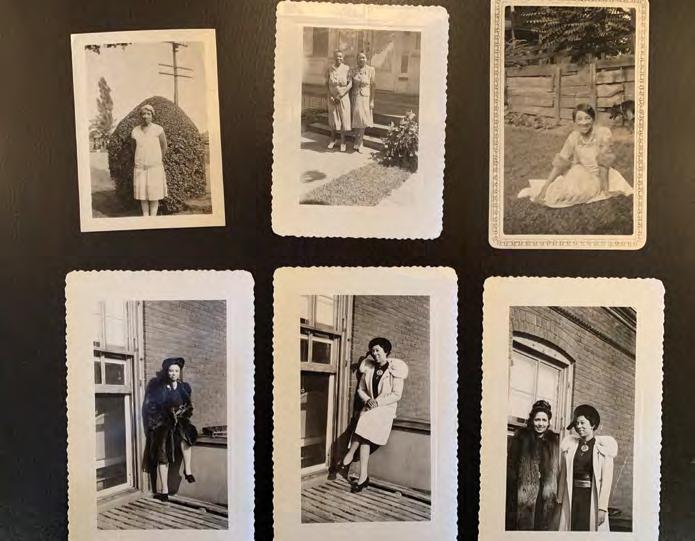
“Libraries store the energy that fuels the imagination. They open up windows to the world and inspire us to explore and achieve, and contribute to improving our quality of life.”
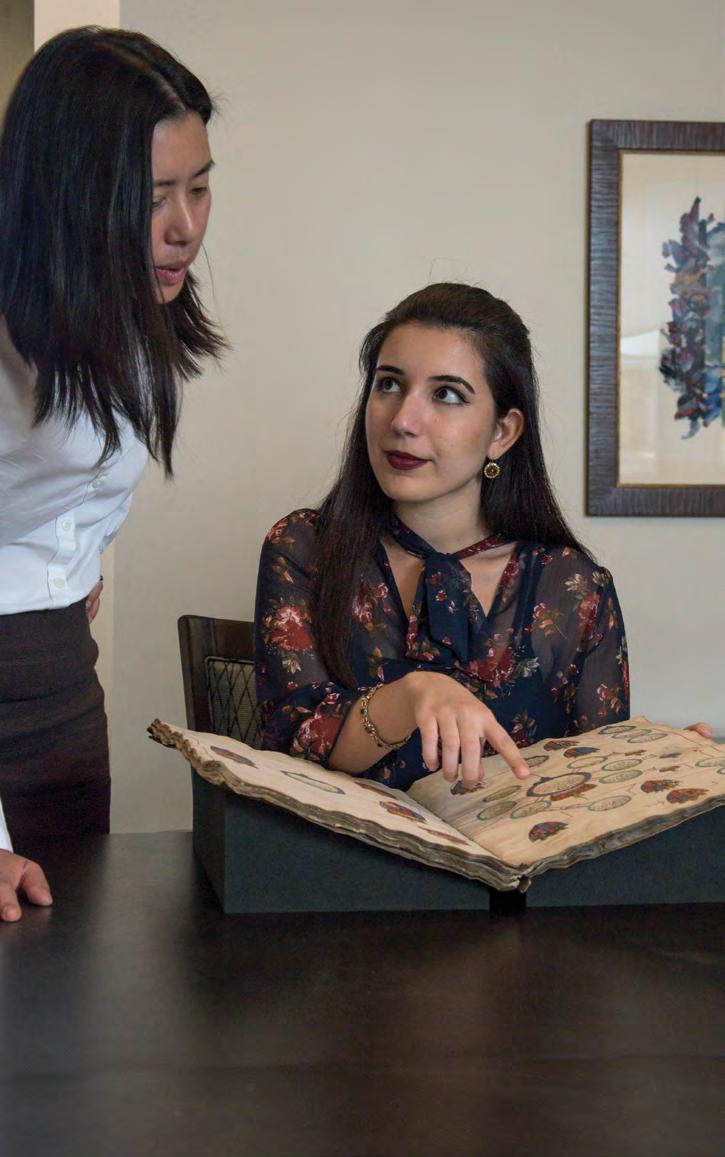
— Sidney Sheldon, novelist
New Special Collections Acquisitions
To support student and faculty academic work, we added some extraordinary print and digital resources, including the personal archive of Marion Thompson Wright (bottom, left), the first African American woman to receive a doctoral degree in history at Columbia University. Upon the recommendation of Pepperdine students in a literature class, we acquired an original 1920 copy of Angelina W. Grimké’s Rachel, one of the first plays to protest racial injustice. We also acquired television ephemera, including the final script and still photographs for Julia, praised for being one of the first sitcoms to feature a Black woman in a professional role.
We expanded our holdings of rare books with three critically important manuscripts: a liturgical prayer from c. 1475–1500, a choir book from c. 1572 (top, left), and a heraldry book from c. 1590–1600 (right). Other important special collections acquisitions included a 16 th -century book on architectural perspective and a 1784 copy of the Massachusetts Spy, a newspaper whose masthead was engraved by Paul Revere.
The Churches of Christ Heritage Center Collection
The Churches of Christ Heritage Center, which contains the most complete collection of Restoration Church materials in the western United States, added significant papers, documents, and photographs to its growing archives, including those of Frances Easley (1903–1990) and Russel Squire (1908–1997), both pioneer members of the faculty at George Pepperdine College in 1937. An important collection of bound periodicals published by British Churches of Christ between 1835 and 1909 was also added to the Heritage Center’s extraordinary holdings.
EXPLORE
Significant Electronic Resources Added
We made significant additions to our growing e-resource portfolio to encourage and support research:
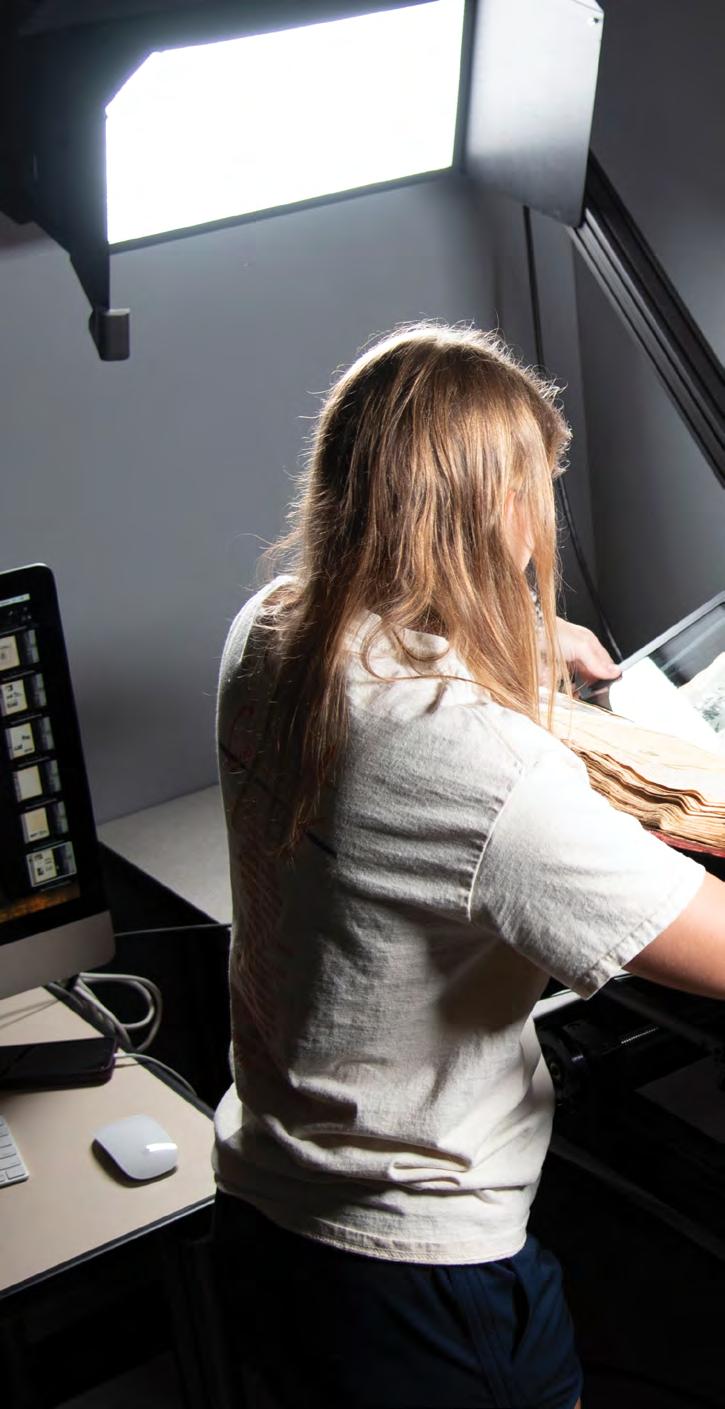
Offered a curated ebook collection through OverDrive’s Libby app, available at pepperdine.overdrive.com
Subscribed to Academic Video Online, giving users full access to more than 65,000 streaming videos
Purchased a subscription to the National Theatre database
Added 3,095 new ebooks to our collection
Received a two-year gift subscription to Barron’s in Education database courtesy of Caruso School of Law alumnus David Adishian (JD ’94)
Additionally, in response to COVID-19, many new items became available from publishers offering temporary free subscriptions.
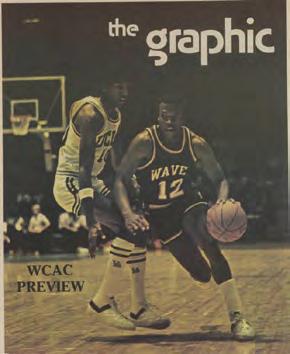
New Items Added to Digital Collections
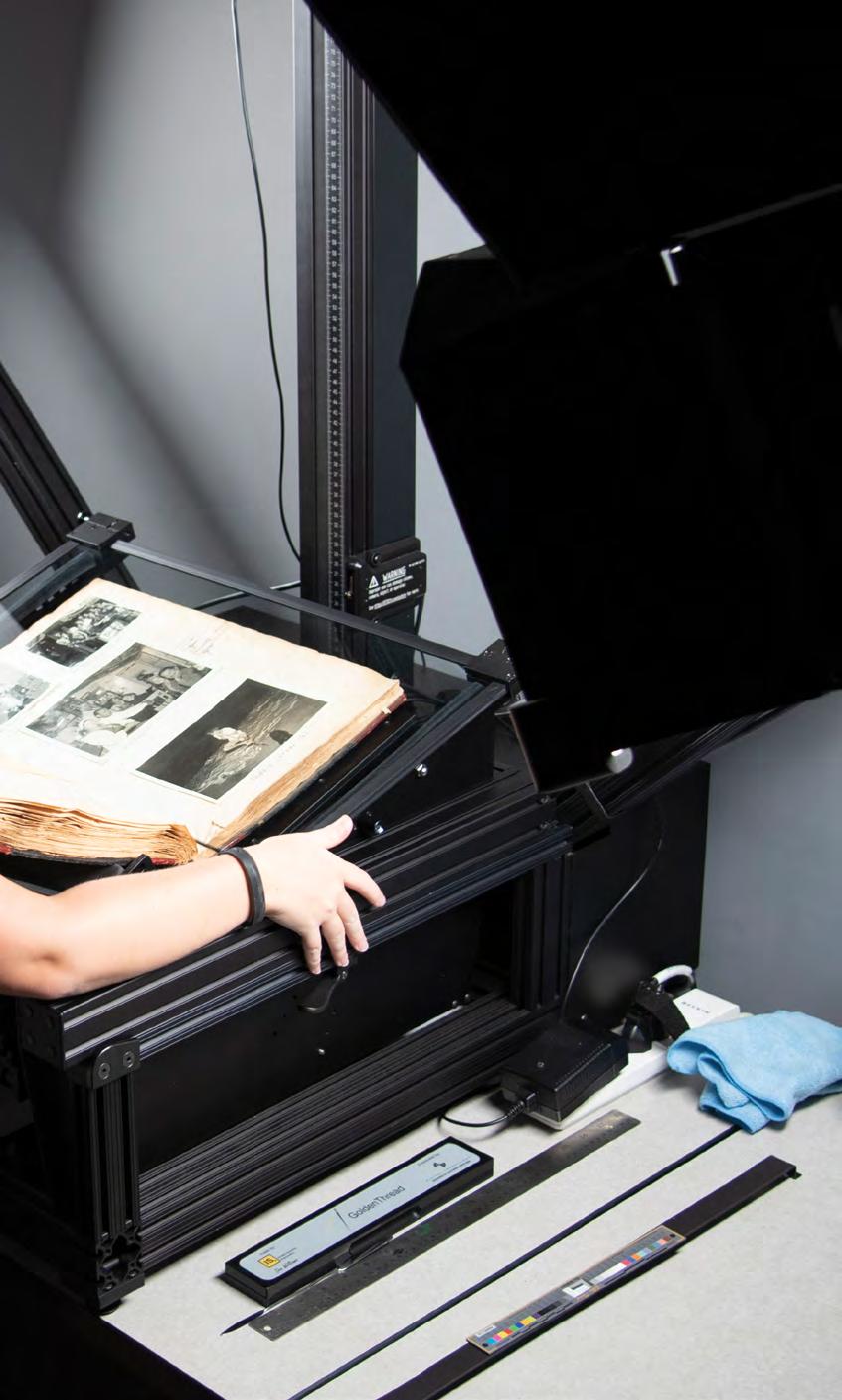
All issues of the Graphic, Pepperdine’s student newspaper, were scanned and uploaded to our server. The collection is full-text searchable, providing an entry point into Pepperdine, Malibu, and Los Angeles history. It also offers insight into the student experience, a perspective that can be difficult to find in archival collections. We continued digitizing the Malibu Times, and we now have all issues scanned and searchable through 1980. Born-digital issues from 2003 to 2020 were also added to the archive. To see past issues, log on to pepperdine.contentdm.oclc.org.
Keeping Current with Digitization Best Practices
We’ve recently added state-of-the-art equipment to our digitization lab to increase processing efficiency. These upgrades include the acquisition of a modular book cradle (left) to digitize bound materials.






